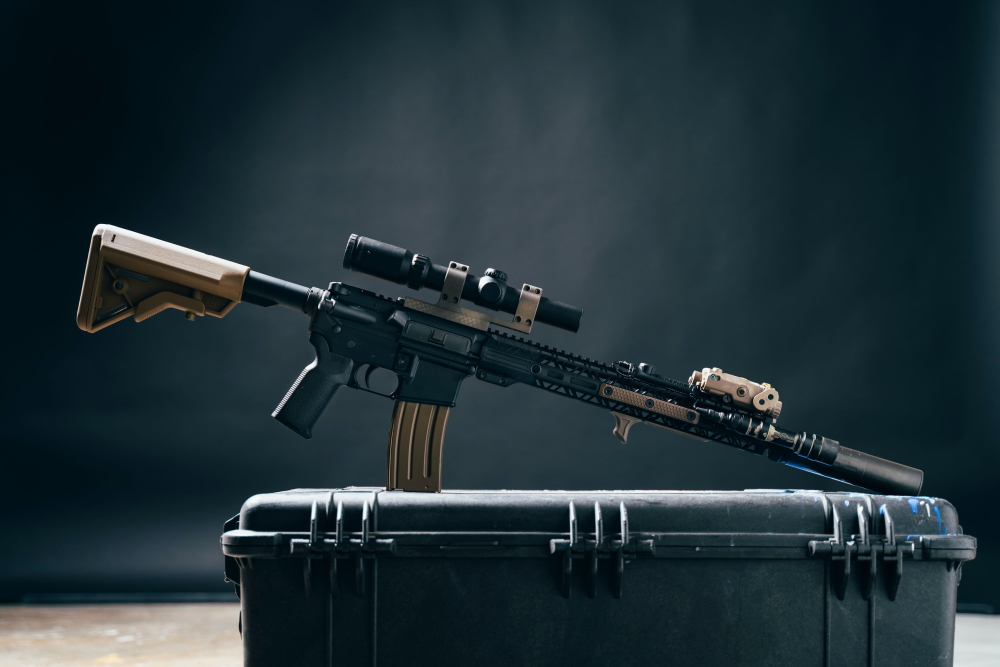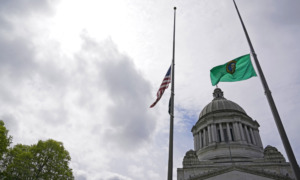 BEXAR ARMS/SHUTTERSTOCK
BEXAR ARMS/SHUTTERSTOCK
The Parkland high school mass shooting on Feb. 14, 2018 killed 17 people, including 14 students. The shooter fired 136 bullets in six minutes and four seconds, or about 22 bullets per minute, from the rifle he used.
In 1789, when the Second Amendment was passed by Congress, the average number of musket balls that could be fired by a member of the militia was about two per minute. Using this comparison of the number of bullets released per minute, the Parkland shooter represented the equivalent of 11 militiamen storming the high school.
The wounding energy of each of the rifle bullets released by the Parkland mass shooter in 2018 is at least nine times greater than the energy released by the musket balls shot by a member of the militia in 1789. Using this energy release per minute calculation, and its accompanying wounding potential, the number of bullets and their energy fired by the Parkland shooter was equal to an estimated 99 militiamen storming the school.
When these assault-style rifle bullets penetrate and perforate a human body, the energy of the bullet tears and shreds through tissue and bone, resulting in fractures, ruptured livers, torn blood vessels and swollen brains, leading to hemorrhage, shock and death. If the victims survive, many face permanent disabilities such as paraplegia. Others suffer from post-traumatic stress.
These rifles and the bullets they carry were developed and have been used for their intended military purposes — to kill human beings. Half of those who were struck by the bullets at Parkland died. All of the children struck by this same type of bullet at Sandy Hook died.

Dr. Stephen Hargarten
As an emergency physician, I am interested in better understanding this pathogen of gun violence: the bullet and the guns that carry them. I and my emergency medicine colleagues along with nurses, trauma surgeons, anesthesiologists, clinical psychologists, social workers and many other members of the teams that staff the trauma centers across the United States are all seeking ways to improve the care of patients when they are injured by bullets.
There is mounting evidence that trauma systems and care are making a difference with gunshot wound management. Resuscitation, surgical interventions and intensive care are all contributing to survival when a bullet penetrates and perforates a human being. If you arrive at a trauma center with signs of life, there is a very good chance you will survive.
And with increasing patient care studies, patients will be able to manage their behavioral injuries as well, with timely interventions from clinical psychologists and social workers.
Assault-style rifles must be reassessed
But bullets like the ones aimed at Parkland and Sandy Hook students have so much energy, so much wounding potential, that it’s too late for the paramedics or the emergency physicians or surgeons to act. The shattered organs, the ruptured blood vessels, the immediate bleeding and shock happen quickly, precluding life-saving interventions. They are dead at the scene.
As a physician and public health scientist, I am keenly interested in understanding how we can and must seek ways to address the access to this amount of wounding potential that is represented in these assault-style rifles and the bullets they carry in high-capacity magazines. We must find ways to balance an individual’s interest in self-protection with that of the public’s interest in safety across our urban and rural communities of the United States.
The rifle and bullet technology that existed in 2018 and continues today far exceeds what was available in 1789. When Congress passed the Second Amendment, the members could not have anticipated that, in 2018, a teenager in Florida would be able to obtain a rifle and bullets with the killing power of 99 members of the Florida militia.
Understanding and addressing today’s bullets, their energy, their wounding potential and the rifles that carry them are essential elements to inform comprehensive solutions to gun violence. Critically examining the energy capacity of an assault-style rifle and their large-capacity magazines should be reassessed for their utility in America’s civil society. This product, the assault-styled rifle, manufactured in the United States and sold commercially, is a military product, designed to kill.
It seems quite reasonable from this physician scientist’s perspective that Congress should limit commercial access to these assault-style rifles and the large-capacity magazines that carry the bullets in our civilian communities.
Dr. Stephen Hargarten is an emergency physician and injury prevention and control scientist. He has practiced emergency medicine for over 35 years and conducted research and published findings and editorials on a spectrum of subjects, including gun violence, since the 1980s.































